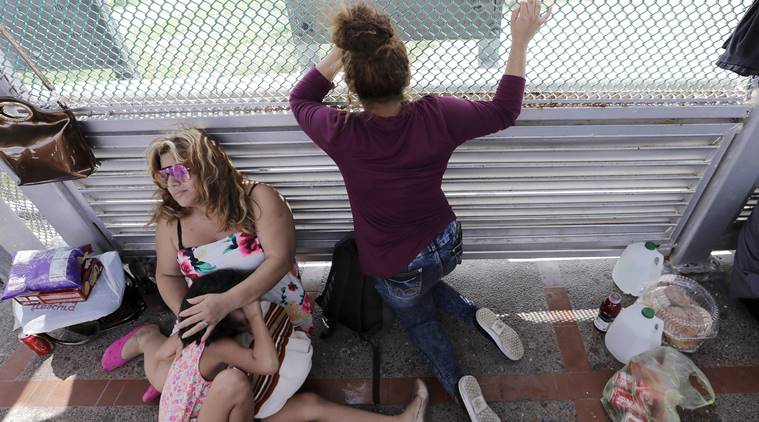
(Written by Julia Jacobs)
It could take federal officials two years to identify what could be thousands of immigrant children who were separated from their families at the southern US border, the government said in court documents filed Friday.
A federal judge had asked for a plan to identify these children and their families after a report from government inspectors in January revealed that the Trump administration most likely separated thousands of more children from their parents than was previously believed.
These families were separated before the administration unveiled its “zero-tolerance” immigration policy in spring 2018 when nearly all adults entering the country illegally were prosecuted and any children accompanying them were put into shelters or foster care.
To identify these families, the government said it would apply a statistical analysis to about 47,000 children who were referred to the Office of Refugee Resettlement and subsequently discharged, according to the court filing. From there, the government said it would manually review the case records of the children who appeared to have the highest probability of being part of the separated families.
Officials estimated that the process would take at least one year and potentially two. In explaining the reason for such an arduous process, the government said US Customs and Border Protection did not collect specific data on migrant family separations before April 2018.
Lawyers representing the Office of Refugee Resettlement did not immediately respond to requests for comment Saturday.
Read | ‘Our country is full’: Trump says migrants straining system
In a court filing for the government, Jonathan White, a commander with the US Public Health Service Commissioned Corps, wrote that identifying this group of children presented new challenges because they were already discharged from the Office of Refugee Resettlement, meaning the government “lacks access” to them.
The statistical analysis was required because manually reviewing the cases of nearly 50,000 children would “overwhelm” the office’s resources, he wrote.
The government’s proposed plan arose from a class-action lawsuit in the US District Court for the Southern District of California. In June, Judge Dana Sabraw ordered the reunification of children and parents who had been separated under the Trump administration policy. President Donald Trump rescinded the policy that same month.
About 2,800 children have been reunified with their families or situated according to their parents’ wishes, said Lee Gelernt, who challenged the policy in court on behalf of the American Civil Liberties Union.
The January report, by the Office of Inspector General of the Department of Health and Human Services, revealed that a group of separated families was unaccounted for because the government lacked an effective tracking system. In March, Sabraw ruled that those families should be included in the litigation.
Gelernt said this identification process should take months, not years. “If the government believed finding these children was a priority, they could do it quicker than two years,” Gelernt said.
Read | Trump takes a step back from threat to close southern border
The families the government may now be tasked with locating are those who entered the United States on or after July 1, 2017, the earliest known date that families were separated; were detained by immigration officials; and have a child who was detained and then released to a sponsor, such as a relative, before the judge’s reunification order June 26, 2018.
When the government previously identified children for reunification, it included only children who were detained at the time of the reunification order.
Sabraw wrote in his March 8 order that because all of these families had been subjected to the same policies and had been separated under “questionable circumstances,” they should have the same opportunity for relief. Although identifying the families may be burdensome, as the government argued, “it clearly can be done,” the judge wrote.
According to the government’s proposed plan, officials would update the ACLU about the families’ information after completing the analysis and reviewing the children’s cases. The organization would then use that information to help reunify parents and children.
Gelernt said a two-year wait to reunite families would be devastating. The longer these children remained separated from their families, he said, the more psychological trauma they would endure. He said the ACLU planned to argue against the proposed plan in court.
The family separations were a central part of the Trump administration’s effort to deter migrant families from trying to enter the United States through its southern border with Mexico.
Data released in March suggested that the administration’s immigration measures — including the separation policy and attempts to beef up border security and limit who qualified for asylum — failed to deter tens of thousands of migrants travelling to the United States, most of whom were escaping violence and poverty in Central America.